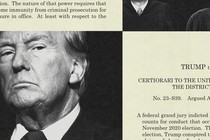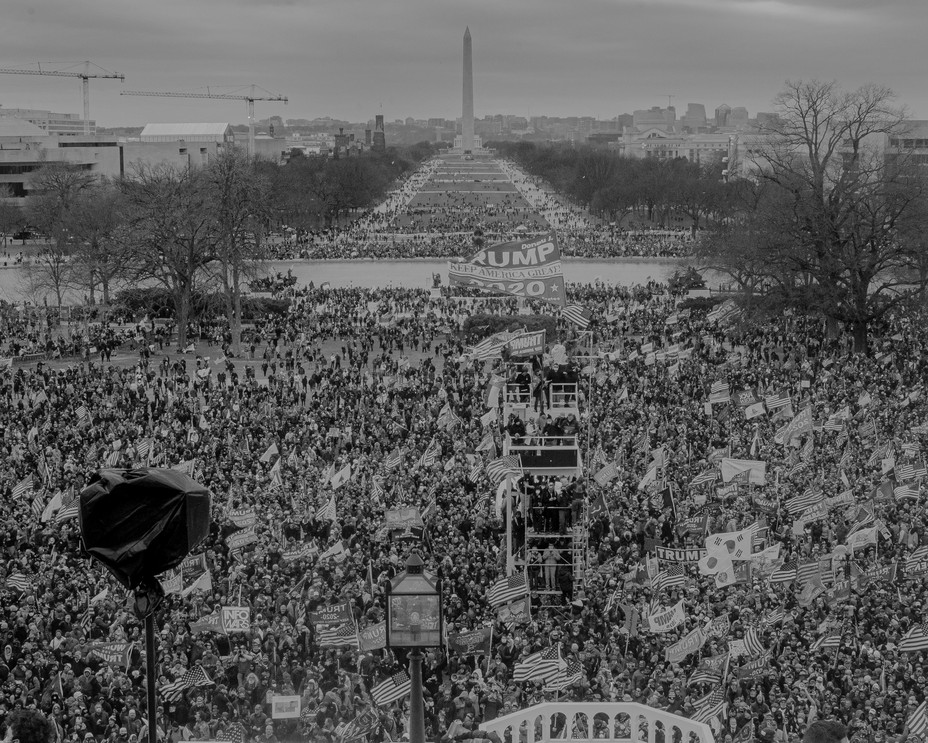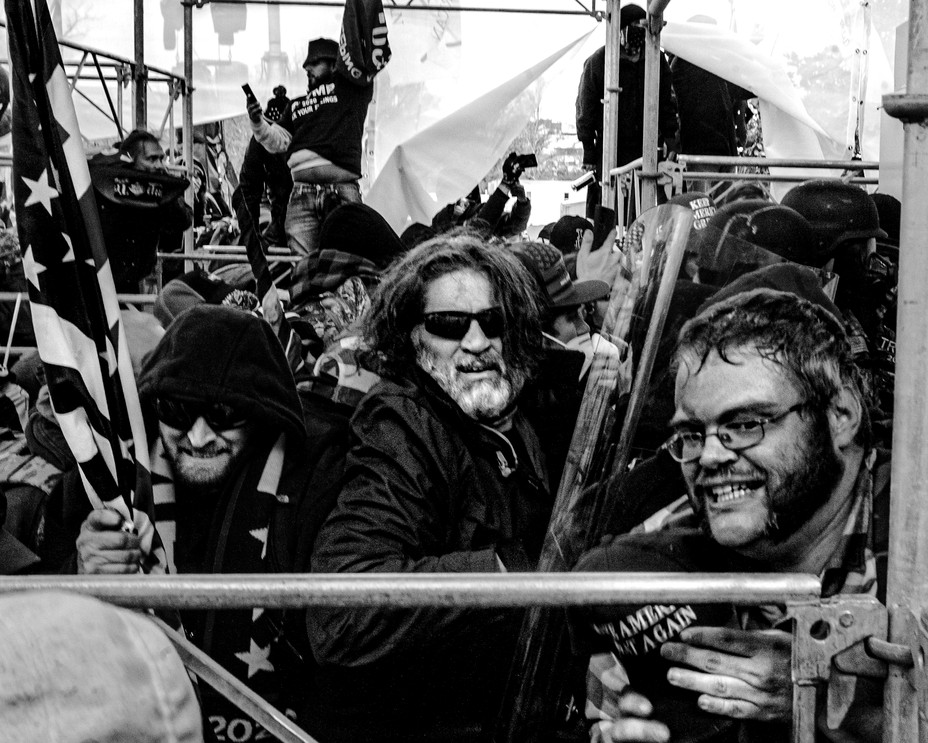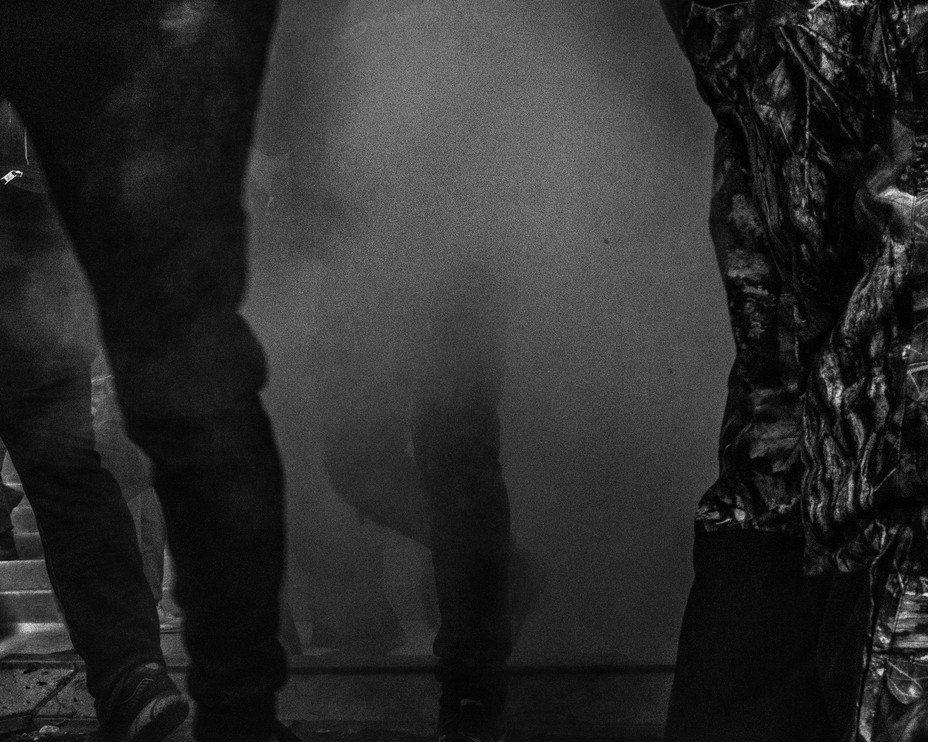What I Saw on the January 6 Committee
11 min read
Days after the January 6 attack on the Capitol, I joined the legal team supporting Representative Jamie Raskin and the other House managers as they prepared for President Donald Trump’s second impeachment trial. At that point, relatively little was known about the origins of the attack. What was visible to us, as we scrambled to draft a presentation to the Senate, was a grim yet simple truth: Trump had set a violent mob upon Congress in order to stay in power. Later, I became part of the House January 6 select committee as an investigative counsel on a team examining how domestic violent extremism had contributed to the insurrection.
In those two roles, I was at the front lines of congressional efforts to make sense of the attack. Throughout these investigations, the question I wanted to answer wasn’t so much what had happened on January 6 itself—that was clear enough to me—but what the insurrection could become,if we failed to contain the forces that had fueled it. I saw firsthand why we cannot remember the insurrection as only a dangerous anomaly or an ideologically agnostic moment of chaos, whipped up by a repugnant but vapid ex-president. It was the manifestation of an organized and growing authoritarian movement that seeks to shatter our pluralistic society.
Two years after my service on the select committee, I am still haunted by what I heard in the interviews and depositions I conducted with my team, which brought me face-to-face with Proud Boys, Oath Keepers, and other extremists. Witnesses described a genuine fascist ideology taking root in modern America, one that presents itself as a savior of our democracy even as it seeks to demolish it. I saw in those depositions glimpses of an America that has no place for me—a gay, Jewish man—and an America where the rule of law is forever threatened by the possibility of violence.
Working on the impeachment-trial team, I remember thinking that my legal research was unequal to the task before us. There was nothing in the record of past impeachments that came close to the high crimes we were trying to explain. A string of 19th-century improprieties—more Teapot Dome than Beer Hall Putsch—were largely mini scandals compared with Trump’s attempted coup.
As I researched, I realized that some of the most helpful analogs came from abroad. I kept returning to the theory offered by the Yale historian Timothy Snyder, with whom I’d worked the prior year on a briefing to the Oversight Committee about Trump’s authoritarian response to violent unrest in Portland, Oregon. Snyder placed Trump’s Big Lie in the context of earlier fascist attempts to consolidate power. Moreover, he stated plainly what too many have downplayed: that the Big Lie hinged on the belief that Black and brown Americans—especially those living in large, Democratic cities—are not equal to their white peers. An essential element of Trump’s unending stolen-election conspiracy is that it was a fraud perpetrated by corrupt Democrats who leveraged the votes of communities of color in places such as Philadelphia, Atlanta, and Detroit—that something about those votes was fishy or illegitimate.
The Trump administration’s failure to stop the insurrection on January 6 is one piece of a story of democratic decline into racial authoritarianism, a path our country has walked before. Understanding this helped me unify the multiple instances of incitement we highlighted at the impeachment trial: Trump’s equivocation after Charlottesville, his menacing of Michigan Governor Gretchen Whitmer, his televised command to the Proud Boys.
It was obvious where this incitement had led. In the trial’s final stretch, I sifted through gruesome security footage and amateur videos that the managers would use in making their case. In the clips, you can hear warlike cries of fealty to Trump and shouts of officers as they are overwhelmed by the mob.
But these events seemed to have had little bearing on the eventual verdict. Senate Republicans acquitted Trump from behind a fig-leaf procedural excuse: that the Constitution gave them no authority to convict a president once he left office. Senators couched their acquittal votes in meaningless rhetorical rebukes of Trump. By treating Trump and January 6 as ugly aberrations, many people seemed eager to rebrand the insurrection as a classic tale of American trial and triumph. The Republic endured. Donald Trump was no longer president. We were safe.

My first days on the select committee, nearly a year after the impeachment effort wrapped, gave me unpleasant déjà vu as I again dove into the muck of January 6. I spent much of 2022 sitting with my teammates in conference rooms—or at home, on one end of a committee Webex, which we used for virtual witnesses—interviewing and deposing members of paramilitary groups and others who were connected to the attack on the Capitol. With each conversation, a fuller portrait of the insurrection emerged. This portrait stood in stark contrast to the one being painted by Trump loyalists, in Congress and elsewhere, who were eager to dismiss the attack as a tourist jaunt, a legitimate protest, or a one-off misadventure. Although a less sweeping view of January 6 might give Americans a false sense of security—and allow Trumpists and their apologists to shrug off whatever residual shame they feel—it denies the truth of our investigation.
To many of the witnesses I deposed, January 6 was justified—and vigilantism more generally is justifiable—when the values of inclusive American democracy fail to align with their own authoritarian mindset, which prioritizes hierarchy and traditionalism, and identifies danger in difference. As one Proud Boy told us, his brethren might “strive to be law-abiding citizens,” but when laws infringe on things such as “religious values,” it is “incumbent” on the Proud Boys to “react” and “in some way rebel when the government becomes tyrannical.”
The Capitol was not the only target of this rage. I had far-ranging conversations with current and former Proud Boys, Oath Keepers, Christian nationalists, and QAnon adherents, who explained what had propelled them to January 6 and beyond: anger against racial-justice protesters, who they believed “just burn down buildings and loot small businesses” because “that’s what they do”; paranoia about how LGBTQ people are trying to “twist human nature”; conspiratorial hatred, tinged with anti-Semitic tropes, of “elite globalists who are trying to take over the United States” and are the “big picture” enemy. The only way to view our evidence was as part of a broader pattern of antidemocratic violence motivated by racism, homophobia, anti-Semitism, and misogyny.
This vision began to come into focus just a few days after I started, when my team conducted the depositions of Enrique Tarrio and Stewart Rhodes, the men who had led the Proud Boys and the Oath Keepers, respectively, on their paths to January 6. The two have since been convicted of seditious conspiracy. Hearing their testimony, I already saw cracks in the narrow conception of January 6 as an awful but isolated day. Rhodes fervently explained that the Oath Keepers had been ready for Trump to call on them during the Black Lives Matter protests in the summer of 2020, months before the election. Tarrio boasted that the Proud Boys remain “activists.”
During the months that followed, I looked more closely at the faces of American extremism and saw a cogent worldview staring back at me. Witnesses parroted almost verbatim Trump’s vilification of heavily nonwhite cities and rattled off conspiracies that reduced Black Lives Matter protesters to violent puppets of shadow elites. My team regularly recognized in these conversations markers of the “Great Replacement” theory, a white-supremacist conspiracy theory that claims that a largely Jewish elite class is manipulating Black and brown people in order to overpower white, Christian America. This belief—which has already motivated multiple attacks that have resulted in mass death—became a prism through which much of our collected testimony made sense.

In early March, I sat in a poorly heated conference room in the O’Neill House Office Building, just a few steps from the Capitol, as I listened to our witness du jour: Patrick Casey, a former leader of the white-supremacist Groyper network, who explained how “massive multiethnic societies … have devolved into conflict and tension.” His words rattled in my head a few days later, when the same Proud Boy who’d said that January 6 was people fighting back “a little bit” went on to fulsomely defend the Capitol siege as a show of force by heroic guardians of traditional Western morality.
These rationalizations of violence and bigotry became so commonplace that I risked losing sight of their significance. But downplaying them became impossible the afternoon I sat down again in that same conference room, this time for an interview with Jason Van Tatenhove, a former Oath Keeper propagandist. I asked him why he thought Donald Trump was so important to Rhodes, the Oath Keepers’ founder. He explained that Rhodes had always hoped that a strong right-wing leader would invite the Oath Keepers to be a praetorian guard to smash ideological opponents and enforce public order. My mind flashed to the ascendant SS in Weimar Germany and the secret police of Pinochet’s Chile—two cases where paramilitary fighters were invited by political leaders to engage in extrajudicial violence to conquer their enemies and cleanse their society without fear of consequences.
As we continued to collect evidence and conduct interviews, I became only more convinced that Americans were deeply unaware of the enduring threat of violence—and its dangerous proximity to the political mainstream. Later that spring, we obtained text messages showing eager coordination between Rhodes and Robert Weaver, one of the two co-founders of the Jericho March, an election-denying coalition that embraced Christian-nationalist language and had staged an event in Washington, D.C., in mid-December 2020 that was a key precursor to the insurrection. The other Jericho March co-founder, Arina Grossu, told me in an interview that Black Lives Matter and election fraud were twin threats “destructive to the fabric of America.” Both individuals were Trump-administration employees on January 6.
Around the same time, we deposed a North Carolina paramilitary leader, who appeared on-screen with a semiautomatic rifle hanging behind him. He clearly had no appetite for the deposition, but soon he was warning us about the murderous intent of the Three Percenters, who had become too extreme even for him. He worried that militias would cause more violence in 2024 at voting precincts that “they assumed to be fraudulent.” Political tolerance of extremism was fueling an unending vigilante fantasy.
Of course, none of these witnesses proclaimed themselves to be foot soldiers of authoritarianism. They believed themselves to be the good guys, who were obeying Donald Trump’s command to rescue America from evil forces that had stolen the election and corrupted our society. And during these hours-long exchanges, it was impossible not to sometimes glimpse charming details on the other end of the Webex. Kellye SoRelle, a lawyer for the Oath Keepers, asked us to pause her deposition so she could feed her cat breakfast. Yet by the end of our session, she was ranting about how a “Jewish” intelligence operation was a mechanism to “further the agenda for global groups” and undermine American sovereignty.
Perhaps the most frightening moment came in early June, when I deposed James Watkins, a man who, along with his son Ron, is widely thought to be at the inner core of the QAnon conspiracy theory. (Both have denied being Q.) I began by asking Watkins about the number of visitors to their website, 8kun, which is known for doxxing campaigns, white-supremacist content, and the occasional mass-shooter manifesto. He said that although traffic to the site varies, it would be higher that day. When I asked why, he whispered forebodingly: “Because they know I’m talking to you.”
During my tenure on the committee, a regular staccato of political and targeted violence echoed in the background of our investigation: a far-right killing of a racial-justice protester in Portland, Oregon; a white-supremacist massacre at a supermarket in a Black neighborhood in Buffalo, New York; a neo-Nazi plot against an Idaho Pride parade; a mass shooting by a violent Trump supporter at the July 4 celebration of a heavily Jewish Chicago suburb; an attack on the FBI after Trump denounced its search of Mar-a-Lago; an attempted kidnapping of then-Speaker Nancy Pelosi and a hammer attack on her husband by a Big Lie believer.
Then, the weekend after I finished my work on the select committee, a shooter with radical beliefs he’d picked up in far-right online spaces opened fire at an LGBTQ club in Colorado Springs. When I learned the news, I thought immediately of our depositions: snide comments by Proud Boys about the need to defend traditional families, imagined conspiracies in which LGBTQ people acted as yet another arm of sinister elites.
These atrocities reminded me, again and again, that the story of January 6 was not over. I knew that their perpetrators—like the insurrectionists I deposed—were part of something much bigger, something ongoing. Our witnesses expressed a clear vision of the society they wanted, one in which the progress of the late 20th century—on race, sexual orientation, gender, and religious tolerance—would be undone, by force if necessary. These attacks, like January 6 itself, were fitful attempts to make this nightmare a reality.

Three and a half years after January 6, Donald Trump is aiming to return to the White House, propelled by openly fascist promises. Following his guilty verdict in New York, Trump’s tirades against the rule of law sparked a fresh wave of insurrectionary threats from his supporters, providing a hint of the dangers that could again emerge if he embarks on another sustained and targeted campaign of incitement. Then, on the debate stage, Trump embraced Capitol rioters as “innocent” and refused to commit to accepting the results of the 2024 election—a clear indication that he remains willing to court fascistic violence in order to regain power. Days later, the Supreme Court virtually guaranteed that Trump will be free to stoke more violence from the Oval Office, which prompted a leading architect of his second-term agenda to threaten violence in order to achieve a Trump-led “second American Revolution.” Since then, Trump has amplified social-media posts embracing QAnon, called for the jailing of his political opponents, and threatened violence against immigrants.
This dynamic, which mirrors the slow burn toward insurrection that I explored on the select committee, should terrify every American who loves our democracy. Another Trump presidency will invite more hatred and violence targeting not only our democratic infrastructure but also members of vulnerable groups not welcome in the intolerant society that extremists are trying to bring into existence. The insurrection still inspires adherents of this cause. America is still fighting off the January 6 attack, because the attackers themselves are still fighting for their vision of America—one that extends far beyond the steps of the Capitol.



